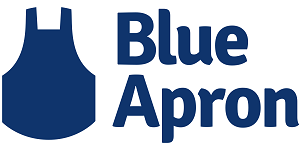For 7+ years, our editors have cooked (and enjoyed) meals from dozens of top meal delivery services. Whether you’re after the easiest meals to cook or the “foodiest” recipes, here’s our run-down of the best meal delivery services for every budget.
Over the years, Home Chef is the brand we come back to again and again. Home Chef’s ingredients are fresh, their recipes diverse enough to please either an adventurous chef or a family of picky eaters, and their pricing just right.
Overview: The best meal delivery companies compared
This table can help you spot your best meal delivery match. Check out our links and keep sign-up promotions in mind when reviewing your options. They’re a great way to give these a try.
| Brand | Kit Price Per Serving | Rating |
|---|---|---|
| Home Chef | $9.99+ |
|
| EveryPlate | $4.99+ |
|
| Blue Apron | $7.99+ |
|
| HelloFresh | $9.99+ |
|
| Sunbasket | $11.49+ |
|
| Hungryroot | $9.69+ |
|
Home Chef
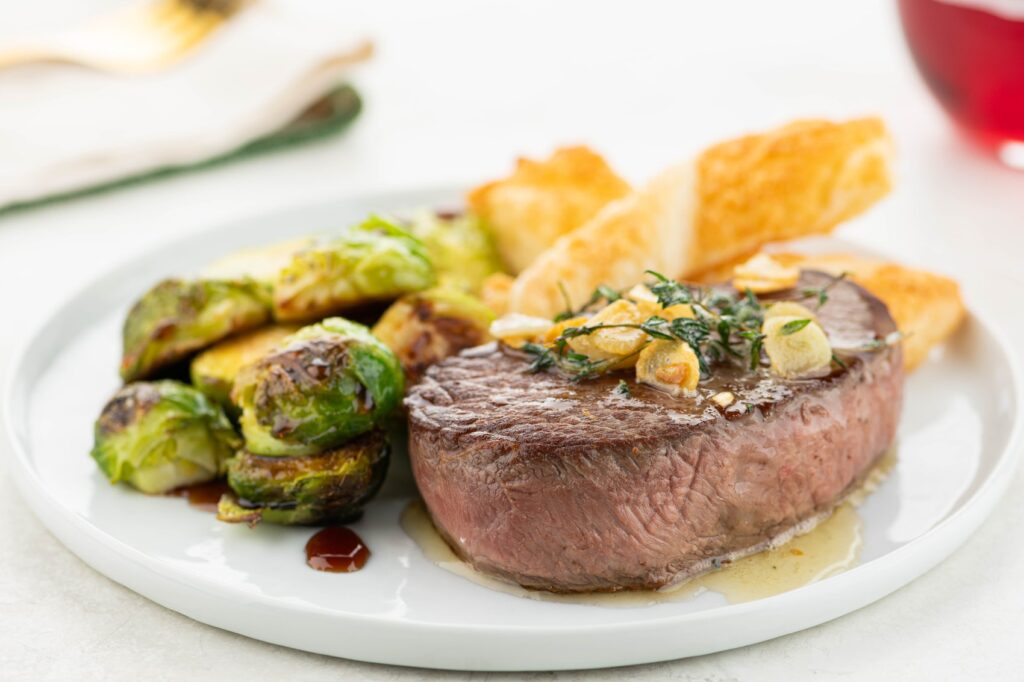
If time management is important to you, Home Chef is an excellent service to try.
Rated #1 in customer satisfaction and our favorite meal delivery company.
Home Chef offers multiple meal choices each week with ample variety to meet dietary needs. While not the most adventurous or customizable meal box out there, Home Chef delivery fresh, quality ingredients and tasty recipes consistently.
- Recipes are easiest to follow
- Customize meals with your favorite protein
- Super fresh ingredients, all measured out
- No vegan option (vegetarian only)
Home Chef arranges many of their dishes by the time it takes to make them, from 15-minute meals like their prosciutto and fig mini flatbreads to elaborate dinners in their Culinary Collection like the bacon jalapeno popper steak sandwich.
Fairly priced at $9.99+ per serving on their kits and $7.99+ per serving on Fresh and Easy (plus shipping), Home Chef is attractive because they offer 30 or more rotating meal choices each week, with a good variety to meet dietary needs. You can opt for the traditional Home Chef plan or their “Fresh and Easy” plan, which provides low- or no-prep meals.
Home Chef can also accommodate many common allergies and dietary preferences, including calorie- and carb-conscious meals, vegetarian dishes, soy- and gluten-free foods, and more. You can customize your protein too, such as swapping a dish with ground pork for ground turkey, and add a la carte items, including breakfasts and desserts.
Some Home Chef kits are even available for purchase at your local Kroger grocery store.
» MORE: Try Home Chef or read our full Home Chef Review
EveryPlate
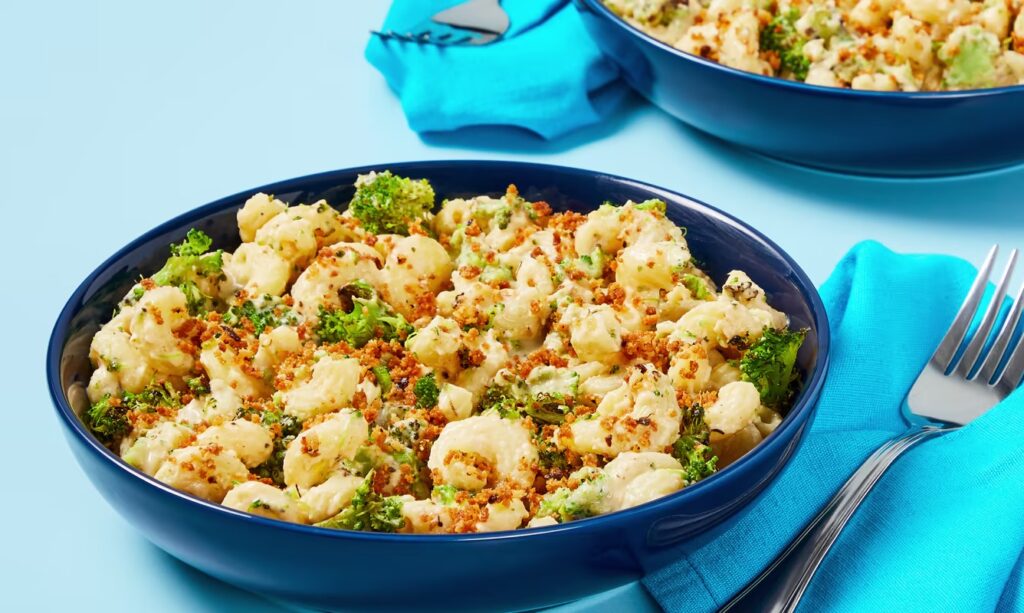
If the cost of meal delivery kits gives you sticker shock, look at EveryPlate. This meal delivery service is a much cheaper alternative to most others, including its parent company HelloFresh.
EveryPlate is an affordable meal kit company focusing on simple comfort food recipes that are easy to make and tasty. The budget-friendly options with EveryPlate are up to 56% cheaper than top meal kit services and can save you up to 30% on your groceries.
- One of the lowest cost meal kit services
- Easy meal prep
- Minimal plastic packaging
- Somewhat limited menu
- Few vegetarian and gluten-free meals
EveryPlate meals start at $4.99 per serving plus a flat rate of $9.99 for shipping. These meal kits are cheaper than takeout and often groceries, and half the price or less of other meal kit delivery services. To keep costs low, EveryPlate uses simpler ingredients, recipes, and packaging. You can order three, four, or five meals per week for two or four people.
Each week, you choose from a menu of different dishes, which includes vegetarian meal options. The meal plan options are Meat & Veggie, Family-Friendly, Veggie, and Quick & Easy. You can customize many meals for free or a modest fee by swapping the protein or side.
EveryPlate meals are fuss-free and familiar, not fancy. If you want to kick your dinners up a notch, you can pay extra for premium meals. This costs extra per serving for ingredients like seafood and steak and slightly more sophisticated dishes.
I tried EveryPlate for myself and found the meal kits to be practical and delicious. The recipes were easy to follow and most of the ingredients looked and tasted good. I did have issues with the quality of some of my produce, but not enough that I wouldn’t consider ordering again. And while the meal options are more limited than other services, there are still plenty of tasty dishes on the menu, especially if you love comfort food and classic flavors.
This is a great meal kit for anyone looking to save money on dinner, whether you’re single or cooking for a family. EveryPlate is also a good choice if you don’t like to cook or just don’t have much time for it, since all recipes are just six steps or less and are beginner-friendly.
If you’re looking for strictly healthy meals, you’re following a certain diet or you have dietary restrictions, or you like a lot of variety in your dinners, this might not be the right meal kit service for you.
» MORE: Try EveryPlate or read our full EveryPlate review
Blue Apron
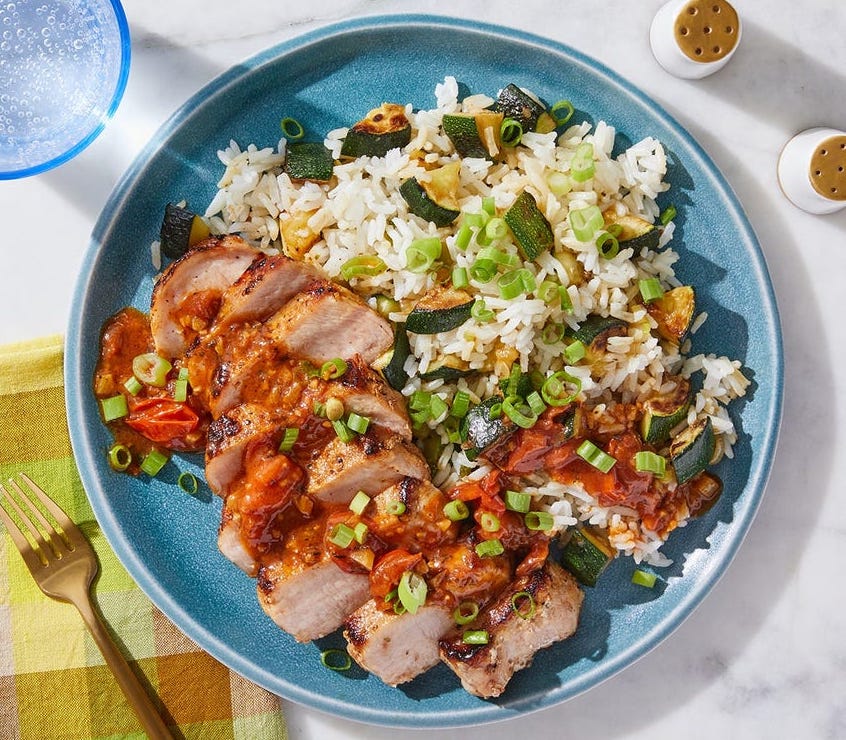
If you love cooking as much as you love eating and you have an adventurous palette, Blue Apron is the meal delivery service for you.
Blue Apron offers both meal kits you prepare yourself and heat-and-eat meals that are already fully cooked. Ingredients are sourced directly from family-run farms to ensure freshness and quality and recipes are curated by a team of professional chefs.
- Highest-quality ingredients
- Adventurous recipes foodies will love
- Plenty of menu choices
- Not allergen-friendly
- Excessive packaging
Blue Apron offers about 19 different meals per week including (usually) 14 meal kits, three prepared meals, and two ready-to-cook meals that you just put in the oven. The meal plans are Chef Favorites, Wellness, Family Friendly, and Fast & Easy. Compared to other meal kit services, Blue Apron’s menu features a lot more international flavors and outside-the-box combinations.
Compared to the price of other meal kit services, Blue Apron is on the higher end of average. The cost per meal in Blue Apron kits ranges from $7.99 to $12.49. When setting up your account, you choose two to five meals per week at two or four servings each. You can add optional wine pairings to your box for $11 per bottle or market items like breakfast, side dishes, and dessert.
When I tried Blue Apron, I was impressed by the variety. There were so many different globally inspired, gourmet, and nutritious meals to choose from. The quality of ingredients was excellent and the food was restaurant-quality fantastic. Overall, this meal kit service made me feel like a pro and saved me a lot of time. I didn’t love the amount of plastic packaging Blue Apron uses and thought the recipes could be clearer, but I would order again.
If you’re looking for meals that are varied and interesting every week, this is the best meal delivery service for you. Blue Apron would be one of my first choices for people watching their weight too since so many meals are WeightWatchers approved and under 600 calories. This meal kit delivery service is also great for people who want quick prep or prepared meals.
Blue Apron might not be right for you if you have picky eaters in your family, are on a tight grocery budget as it is, or don’t have a lot of time to cook (but don’t want prepared meals). Also, it helps if you have more experience in the kitchen because the recipes can be a little vague, which beginners might find frustrating.
» MORE: Try Blue Apron or read our full Blue Apron review
HelloFresh
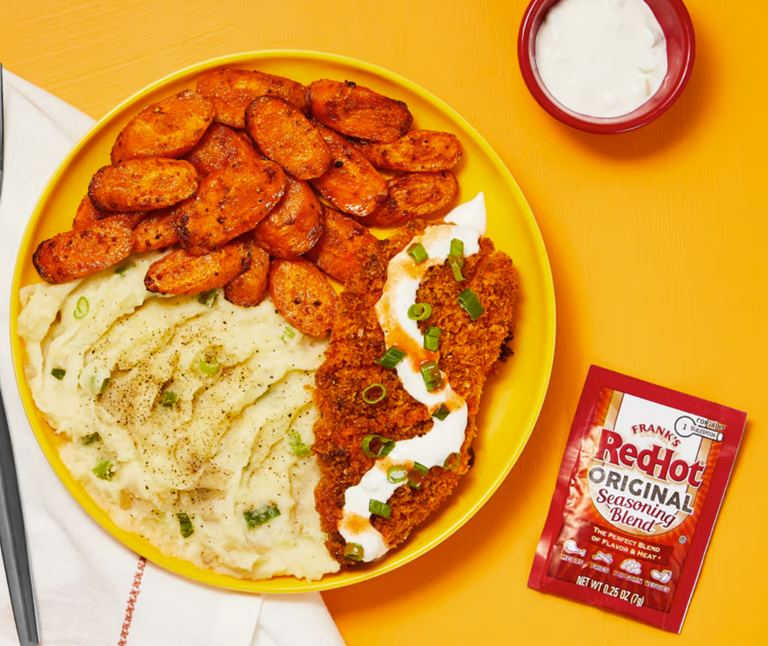
One of the first meal kit delivery services ever and the most popular still today, HelloFresh has meal kits figured out. Fun recipes that are easy and educational make this the best meal delivery service for beginners.
HelloFresh offers 45+ weekly recipes and 100+ seasonal and convenience items to choose from that can please a variety of different diets and preferences.
The recipes are easy to prepare with simple step-by-step instructions that anyone can follow, and the pre-portioned ingredients provided are always fresh.
- Easy meal prep with simple instructions
- Range of options to please everyone
- Eco-friendly and convenient packaging
- More expensive than some competitors
- Delivery window can be inconvenient
HelloFresh offers six different meal plans to choose from, including a vegetarian option, a family-friendly option, and a pescatarian option. Each recipe includes a difficulty rating and nutrition facts. Including custom combinations like swapping your protein or side, the rotating menu features 45+ weekly recipes and 100+ seasonal and convenience items.
HelloFresh is better than many meal services at catering to different dietary needs. While most meals aren’t allergy-friendly, there are a lot of options to change ingredients so you can make recipes work your wellness goals without sacrificing flavor (often for free).
You can order anywhere from two to six recipes per week — way more options than other meal delivery services — for two or four people each. The cost per serving is between $9.99 and $11.49 plus shipping.
I tried three meals from HelloFresh and I loved the whole experience. My favorite things about this company were the packaging and the recipe cards. HelloFresh boxes contain surprisingly little plastic and the meals are separated into individual paper bags, which was way more convenient than sorting through a box full of ingredients. The recipes, another huge strength, included large pictures of each step and helpful tips.
I’d recommend HelloFresh for beginners, people who want to reduce their waste, save versus a restaurant or takeout, and families who need meals both children and adults will love. The recipes are easy to follow and there are several kid-friendly dishes on the menu. Plus, HelloFresh lets you customize to your liking.
If it’s healthy meals you’re after, you’re probably going to want to at least compare with a different meal delivery service. HelloFresh has some balanced meals, but a lot of recipes can be high in fat and calories. outside their health-forward options. It’s not the most expensive, but it also isn’t the most affordable meal kit. HelloFresh will save you time grocery shopping but might not save you money or might cost more than you spend on dinner now.
» MORE: Try HelloFresh read our full HelloFresh Review
Sunbasket
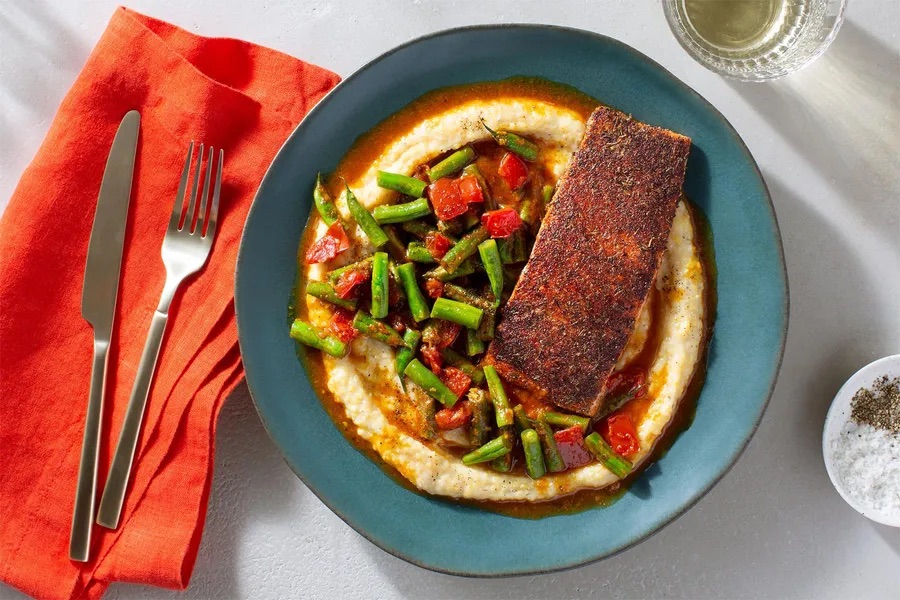
Sunbasket is a meal delivery service that caters to people valuing sustainable business practices and healthy, organic ingredients.
This service prioritizes quality, first and foremost. They work with select ranchers and fisherman who respect and care for their animals, as well as farmers who provide 100% organic produce.
Sunbasket has a variety of meals for those who are paleo, vegetarian, gluten-free, and more. You can also select preferences like “High Protein,” “Low Calorie,” and even “Diabetes-Friendly.” For families, Sunbasket has kid-friendly dishes, which feature recipe instructions that include suggestions for how kids can help.
In addition to their many creative dishes — like the Moroccan-spiced salmon with jeweled couscous and lemon yogurt or the triple-mushroom quinoa with watercress, scallions, and peas — Sunbasket has an online market, similar to Blue Apron, where you can purchase everything from breakfasts to snacks, to quick lunches and even specialty meats.
The catch with Sunbasket is the price tag. For $9.99 per serving (plus shipping), you’ll receive 4-10 pre-made meals, ready in under four minutes. However, if you prefer a meal kit with fresh ingredients you can cook yourself, Sunbasket’s prices are a little steeper at $11.49+ per serving (again, plus shipping).
» MORE: Try Sunbasket or read our full Sunbasket review
Hungryroot
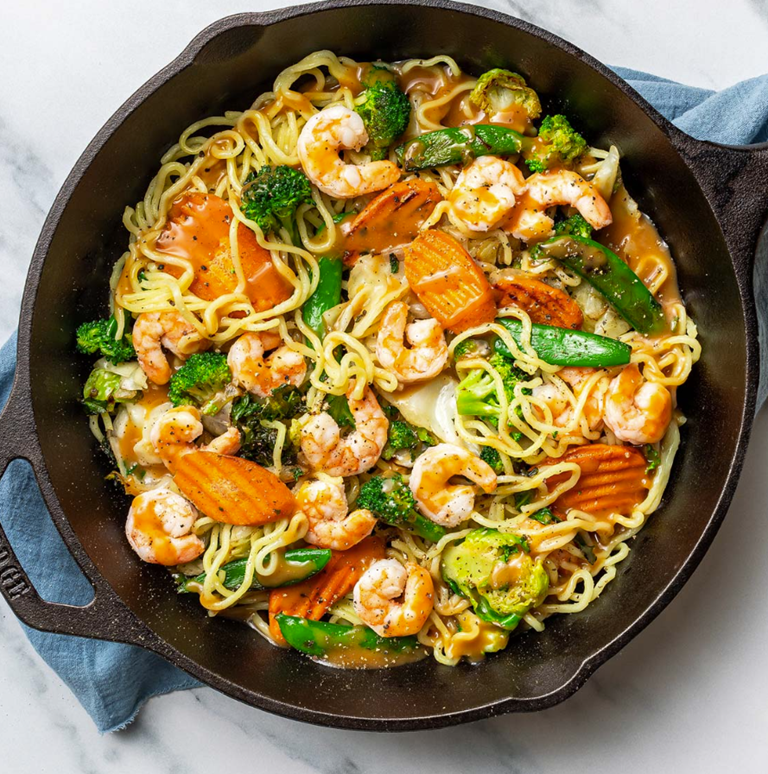
Advertising itself as the “all-in-one recipe and grocery service,” Hungryroot is a healthier meal delivery service that lets you add grocery store add-ons to your delivery.
Hungryroot combines the convenience of a meal delivery service and the staples you’d pick out at the grocery store (then wait in line to purchase). The meal kit portion includes ingredients you follow recipes and cook yourself or options for ready-to-eat meals. You can order between three to eight 2-to-4 serving recipes starting at $65 a plan. The actual price is personalized to how much food you order
Most meals with Hungryroot you prepare yourself are ready in about ten minutes. That means the recipes aren’t too terribly complex, which is good if you’re in a hurry and maybe not the best if you’re looking to become a master chef in the kitchen by learning unique recipes. The meals are easy to put together with an emphasis on healthy options but you can’t filter certain popular diets like Paleo and Keto.
Hungryroot mixes in some Walmart and Instacart by also offering a grocery delivery service to its meals. You can add on as many grocery store items as you’d like. Options include healthy snacks, sweets, fresh fruit, breakfast items and more. You might using these add-ons to complete other meals if you’re an ingredient away or just pick up an organic honeycrisp apple to enjoy after dinner.
Hungryroot uses a credit-based system that assigns grocery items and recipes a credit value when ordering your plan that corresponds to the number of servings selected. Shipping is free unless your order does not exceed $70, then it’s $6.99.
» MORE: Learn more about Hungryroot
How meal subscriptions work
Alright, food lovers! Ever had one of those days where you’re craving a gourmet meal, but the mere thought of venturing into a grocery store, shuffling between aisles, and searching for each ingredient feels exhausting? Or perhaps you’re just someone who’s curious to try their hand at cooking, but wouldn’t know coriander from cardamom? Enter the modern marvel: Home Meal Delivery Kits!
What are these meal delivery kits anyway?
Imagine a fairy god-chef assembling all the ingredients you’d need for a scrumptious meal, portioning them perfectly, and then delivering them right to your doorstep. That’s basically what a meal delivery kit does! It’s a subscription service that sends you boxes containing all the necessary ingredients for a particular dish, along with an easy-to-follow recipe card.
What’s inside the box?
- Pre-portioned Ingredients: Every ingredient that’s needed for your chosen recipe comes measured and neatly packaged. This not only cuts down on food waste but also means you don’t have to buy a whole jar of a spice you’ll use just once.
- Detailed Recipe Cards: These are your roadmaps to culinary success! They typically come with step-by-step instructions, pictures, and sometimes even QR codes that you can scan with your phone to watch a video tutorial.
- Special Packaging: The companies are pretty smart about packaging. Ingredients that need to be refrigerated, like meats or dairy products, often come with ice packs to keep them fresh during delivery.
How does the subscription part work?
Most services offer flexible subscription models. You can usually choose how many meals you want to be delivered each week and for how many people. Plus, there’s often an option to skip weeks or pause your subscription if you’re going on vacation or just want a break.
Diverse menus to explore
One of the coolest things about these kits is the variety. Many companies rotate their menus regularly, offering a mix of classic favorites and global dishes that might be new to you. Whether you’re a vegetarian, pescatarian, or meat-lover, there’s something for every palate. Some companies even offer breakfast, dessert, and snack options.
Why are people raving about them?
- Convenience: No need to plan meals, shop for ingredients, or measure out portions. It’s all done for you!
- Skill Building: They’re an awesome way for novice cooks to learn. Each kit is like a mini cooking lesson, helping you become more familiar with various ingredients and techniques.
- Dietary Preferences: Many companies offer kits catering to specific diets like keto, paleo, or gluten-free, making it easier for individuals with dietary restrictions.
- Reduced Food Waste: Since you get just the right amount of each ingredient, there’s less chance of unused items going bad in the back of your fridge.
- Freshness: Many of these kits prioritize farm-fresh, organic, or sustainably sourced ingredients.
Anything to watch out for?
Well, they’re convenient, but not always cheap. The cost per meal can be higher than if you sourced the ingredients yourself. Also, while companies are making efforts to reduce packaging, there can still be a fair amount in each box, which could be a concern for the eco-conscious among us.
How our team chose the best meal delivery services
Now, I’m sure you’re wondering: amidst the sea of options out there, how on Earth did our team pick the best ones? Well, put on your culinary detective hat and let’s dive deep into our flavorful journey of selection.
Step 1: Research, research, and…did we mention research?
Before we even thought of tasting anything (the fun part!), our team embarked on a digital journey, scouring every nook and cranny of the internet. From popular blogs to user reviews on various platforms—think Trustpilot, Yelp, and even Reddit—we dug deep to understand what customers truly want.
- Feedback Matters! – We didn’t just rely on the star ratings; we took the time to go through countless feedback to understand the nuances. After all, it’s in the details, right?
Step 2: Diversity is the spice of life
One size doesn’t fit all, especially when it comes to food. We prioritized services that offered a range of options.
- Global Flavors – From the tangy streets of Asia to the rustic charm of the Mediterranean, we sought services that cater to the global palate.
- Dietary Preferences – Whether you’re vegan, keto, gluten-free, or just calorie-conscious, we ensured the services on our list had something delicious for everyone.
Step 3: Taste-testing galore
Once we had our list, it was time for our favorite part: taste-testing! We sampled dishes from numerous services, rating them on flavor, freshness, portion sizes, and overall satisfaction. Yes, it was as delicious as it sounds!
- Freshness Check – We paid special attention to how the meals arrived. Was the packaging secure? Were the dishes still fresh? Details, details, details!
Step 4: Bang for your buck
Let’s be real: while we all love gourmet dishes, we don’t want them burning a hole in our wallets. We analyzed the cost per meal, looking for services that provided value for money without compromising on taste.
- Cost vs. Quality – It’s not always about the cheapest option. It’s about which service offers the most delectable bang for your buck.
Step 5: Ease of use and customer service
An overlooked but super crucial aspect! We evaluated each service’s website and app (if they had one) for user-friendliness. And of course, we made some cheeky calls to their customer service to see how responsive and helpful they were.
- Return Policies & Flexibility – Life is unpredictable! We appreciated services that understood this, offering easy rescheduling or cancellation options.
Step 6: Environmental consciousness
In today’s age, we can’t overlook the environmental impact. We favored services that used eco-friendly packaging, had recycling options, or showcased any efforts towards sustainability.
- Eco-Friendly Practices – From biodegradable packaging to sourcing local ingredients, we leaned towards services that showed they care about Mother Earth.
Step 7: The final shortlist
Armed with all this data, our team sat down for some serious discussions (and maybe a food coma or two!). We debated, discussed, and sometimes even passionately argued to whittle down our choices to the final list.
How do you pick the best meal delivery service for your lifestyle?
Gone are the days when ordering food was a rare treat. With the advent of meal delivery services, a plethora of culinary delights are just a click away.
Imagine getting gourmet dishes or even simple home-cooked style meals delivered right at your door, without the hassle of grocery shopping or meal prepping.
It’s the epitome of convenience combined with taste. But with the vast sea of options available, how does one pick the right service? Let’s dive in!
Why meal delivery services are trending
Life’s pace is ramping up, and we’re always on the go. Between work, family, and trying to squeeze in some “me time,” cooking becomes a chore. Enter meal delivery services!
They cater to a range of preferences, from health-focused meals to indulgent treats. They aren’t just about convenience; they offer an opportunity to explore global cuisines from the comfort of our homes.
It’s like bringing a chef into your kitchen every night.
Determining your lifestyle needs
Before you get overwhelmed with options, take a moment. Think about what you really need. Are you aiming to lose weight? Maybe you need high-protein meals.
Do you have kids? Perhaps kid-friendly meals are essential.
Or are you a gourmet at heart, seeking new and exotic flavors? Pinning down your priorities can narrow the field significantly.
Features to Consider
Picking a service is more than just “eeny, meeny, miny, moe.” Here’s what you should look into:
Dietary preferences & restrictions
Every individual’s food choices are unique. From those avoiding gluten to vegans, and from keto enthusiasts to pescatarians, the spectrum is vast.
Check if your prospective vegan meal delivery service can cater to your specific dietary needs. After all, you don’t want to receive a meal you can’t eat.
Portion sizes & meal frequency
Listen, if you’re the kind who loves hearty portions, no judgment here! But make sure your service doesn’t send you small, unsatisfying meals.
On the other hand, if you prefer smaller, more frequent meals, there’s something out there for you too. It’s all about aligning the service with your eating habits.
Pricing and budget considerations
We all dream of eating like royalty, but the wallet does have its limits. While exploring, keep an eye on the price tag.
Some services might seem affordable at first but can rack up costs with add-ons. Find one that offers the best bang for your buck.
Sustainability & packaging
With our planet’s health in question, sustainability isn’t just a buzzword anymore. Look into how your chosen service packages its food.
Do they use excessive plastic? Or have they adopted eco-friendly alternatives? Your choices can make a difference.
Local vs. International cuisine
Food can be an adventure. While local delicacies are comforting, sometimes the soul craves exotic flavors.
Whether it’s Japanese sushi, Italian pasta, or Mexican tacos, ensure the service caters to your adventurous (or homely) palate.
Reading Reviews and Doing Research
The internet is your best friend and detective partner here.
Importance of customer feedback
Ever bought something online and later wished you’d read the reviews? We’ve all been there.
Scour through reviews. They give you a glimpse of what’s right and what might be a dealbreaker.
Red flags and potential issues
Consistent complaints about a particular issue should raise eyebrows. If multiple customers talk about tardy deliveries or poor food quality, take note.
Convenience vs. Customization
Food, while essential, is also deeply personal.
Ready-to-eat vs. Cook-yourself kits
For the days when you’re too worn out, ready-to-eat meals are a godsend. But for those who find solace in cooking, meal kits can be therapeutic.
Gauge what matters more to you: immediacy or the joy of cooking.
App integration and user interface
We live in the digital age. A smooth app experience is almost as essential as the food itself. An intuitive interface, easy customization options, and swift checkouts can make all the difference.
Trying Before Committing
Let’s face it, commitment can be scary.
Sample boxes & promotional offers
If a service offers trial packs or promotional discounts, jump on it! It’s like dating before marriage – a way to test the waters without fully diving in.
Return and cancellation policies
Life’s unpredictable. Maybe you decide to go on an impromptu vacation or want to switch services. Having flexible return and cancellation policies can be a relief.
How to save money on meal kits
If you’re reading this, chances are you’re looking to enjoy the deliciousness and convenience of meal kits without breaking the bank.
Good news: there’s a plethora of ways to enjoy gourmet meals at a pinch of the price. Let’s dive into the treasure trove of tricks to save big on meal kits.
1. Promo codes and first-time offers
Ah, the sweet lure of the promo code. These are the low-hanging fruits of savings.
- Look Before You Leap: Almost every meal kit service offers tempting discounts for first-time subscribers. Do a quick online search, or visit their website before you sign up to grab these juicy deals.
2. Refer and earn
Share the love, and watch your savings grow.
- Share the Flavor: Many meal kit companies offer referral programs. Refer a friend, and both of you might end up with a hefty discount. It’s a win-win!
3. Choose larger plans
Sometimes, buying in bulk is the key.
- More is Less: Often, the cost per serving goes down if you opt for more meals per week. If you’re living with family or have roommates, consider consolidating your orders.
4. Review and customize
Take charge, and tailor to fit your pocket.
- Be Your Own Chef: Some services allow you to swap out pricier ingredients for more affordable alternatives, or even skip certain components you might already have in your pantry.
5. Skip a week (or more)
Flexibility can lead to frugality.
- Take a Break: Most subscription services are flexible, allowing you to skip weeks without any penalty. If you find a great deal on groceries or just want to cook from scratch, hit the pause button on your meal kit.
6. Stay alert for deals
Eyes on the prize, fellow foodie.
- Newsletter Know-how: Subscribe to newsletters of your favorite meal kit providers. They often share exclusive deals, discounts, or special offers with their loyal subscriber base.
7. Limit gourmet options
While it’s tempting to go for the fanciest dishes, sometimes simplicity is kinder to your wallet.
- Simple Pleasures: Many meal kits offer a range of dishes, from basic to gourmet. Opting for simpler meals more often can help you shave off some costs.
8. Cancel and resubscribe
A slightly cheeky move, but hey, a penny saved is a penny earned!
- Play the Field: Occasionally, companies offer even better deals to woo back former customers. If you’re not particularly loyal to one brand, consider rotating between a couple, enjoying the “come back to us” offers.
9. Keep track of portions
Avoid the pitfall of over-ordering.
- Just Enough: Some meal kits are pretty generous with their portions. If you consistently find leftovers, consider reducing the number of meals or servings you order.
10. Go for seasonal options
Embrace the flavors of the season, and your wallet will thank you.
- Seasonal Sensations: Seasonal ingredients are often more affordable. Look out for meal kits that pride themselves on using fresh, local, and seasonal produce.
Are meal delivery services cheaper than grocery shopping?
You’ve probably seen those shiny ads for meal delivery services and thought, “Hmm, could this be a wallet-friendly alternative to my weekly grocery store run?”
It’s the modern-day debate: the convenience of meal deliveries versus the age-old tradition of grocery shopping. Let’s break it down and see where the penny really drops
The upfront costs
At first glance, ordering a meal from a delivery service might seem pricier than whipping up something with ingredients from your local grocery store.
- Per Meal Pricing: Most meal delivery services price per serving or meal. While it might look like you’re paying a premium, remember you’re often getting gourmet, chef-designed recipes with high-quality ingredients.
The hidden savings
Now, here’s where things get interesting. While meal delivery services have an upfront cost, they come with some hidden savings that aren’t immediately obvious.
- No Wasted Ingredients: How many times have you bought a whole bunch of cilantro, only to use a handful and watch the rest wilt away? With meal kits, you get the exact portion you need, leading to less food waste.
- Reduced Impulse Buys: Ah, the siren call of the snack aisle or that fancy cheese you didn’t need! Meal kits can help curtail those impulse purchases that often inflate our grocery bills.
Time is money
It’s not just about the dollar bills; it’s about the time and energy you invest.
- Streamlined Shopping: Forget the endless wandering of aisles or waiting in checkout lines. With meal kits, everything you need is delivered straight to your door.
- Less Frequent Grocery Trips: With the bulk of your meals planned, you might find yourself making fewer trips to the store, saving on gas, time, and the mental energy of planning every meal.
The value of variety
Sure, beans and rice are cheap, but do you really want to eat them every night?
- Diverse Menus: Meal delivery services shine in offering a wide variety of meals, introducing you to flavors and ingredients you might not have tried on your own. This culinary journey can be tough to replicate cost-effectively with grocery shopping.
- Economies of Scale: These services often source ingredients in bulk, allowing them to introduce more exotic or gourmet ingredients without the price skyrocketing.
The intangibles
While we can crunch numbers and compare receipts, there are some aspects that don’t have a direct price tag.
- Learning Curve: For budding chefs, these kits can be an educational experience. They introduce cooking techniques and recipes that can be reused in the future. In essence, it’s a bit like a mini-cooking lesson with every meal!
- Quality of Ingredients: Some meal delivery services pride themselves on sourcing organic, non-GMO, or locally-sourced ingredients. If you’re someone who values this, it might be more cost-effective than seeking out specialty stores.
The verdict
So, is one decidedly cheaper than the other? It’s not a simple black or white answer.
For those who value their time, enjoy variety in their meals, and dislike the hassles of grocery shopping, meal delivery services might indeed be a cost-effective option.
On the flip side, if you’re someone who loves the experience of shopping, finds joy in hunting deals, and has the time to plan and cook diverse and flavorful meals, the traditional grocery route might still be your champion.
In the end, it’s all about weighing the convenience, variety, and experience against the costs and making a choice that aligns with your lifestyle and priorities.
Are delivered meal plans worth it?
Hey there, fellow food enthusiast! You’ve probably noticed everyone’s talking about delivered meal plans. But how do we separate the sizzle from the steak? Let’s embark on this delicious journey together!
Introduction to meal delivery services
Ah, the transformation! Remember when food delivery was just a cheesy pizza or some crispy spring rolls? Well, the culinary world has undergone a revolution, and now, gourmet meals are just a click away. We’re talking about chef-curated dishes, globally inspired flavors, and meals that cater to every dietary whim you could imagine.
Background of meal deliveries
What once was a domain dominated by a few select fast-food joints has exploded into a myriad of options. Our doorsteps have transformed into landing pads for dishes from every corner of the world. Whether you’re hankering after a creamy Thai curry, a spicy Indian biryani, or a classic American cheeseburger, the world is literally at your feet. But more than that, it’s the way these services have woven themselves into the fabric of our daily lives. They’ve transformed occasions, made everyday meals exciting, and made trying new cuisines a delightful adventure.
Why the sudden surge in popularity?
You’d think it’s about convenience, and you wouldn’t be wrong. But there’s more in this pot. As our schedules become chaotic and our world increasingly digital, the desire for tangible, real-world pleasures like good whole food arrives fresh out has skyrocketed. There’s also the appeal of healthier meals and an ever-changing menu. With these services, every day can be a new culinary adventure, and who wouldn’t want that?
Pros of delivered meal plans
Alright, let’s jump into the dreamy side of things.
Convenience and time-saving
Remember those days when cooking felt like a marathon after a long day’s work? No more! These plans are your ticket to more leisure. Think about it: hours previously spent on grocery shopping, prepping, cooking, and the worst part—cleaning up—are now all yours. Maybe take up painting or perhaps finally start that book you always wanted to read.
Healthy, well-balanced meals
It’s not just about eating; it’s about eating right. Most of these plans have menus curated with the help of nutritionists. It’s like having a personalized diet plan without the incessant visits to a dietician. From calorie counts to balanced nutrients, it’s health served on a platter.
Diverse menu options
Ah, here’s where the magic truly begins! Think of the myriad of choices at your fingertips, each designed to tantalize and satisfy in unique ways.
International cuisines
Can you imagine diving into the heart of Italy with a rich, creamy risotto one evening, and by the next, venturing into the vibrant streets of Thailand with a tangy pad thai?
Delivered meal plans offer a delightful culinary world tour.
Whether you’re in the mood for some fiery Mexican tacos, a sumptuous French ratatouille, or the comforting embrace of a British Shepherd’s Pie, the world is your oyster—or your plate, in this case!
And the best part? You don’t need visas or flight tickets. Just a click, and you’re savoring the world.
Special dietary requirements
Ever felt the weight of dietary restrictions pulling down your gourmet dreams? Those days are behind you. Today’s delivered meal plans are thoughtfully curated to cater to an array of dietary needs.
Vegan choices
Think hearty chickpea stews, sumptuous vegetable curries, or maybe a tofu stir fry that bursts with flavors. Just because it’s plant-based doesn’t mean it’s bland.
Keto and paleo menus
If you’re on the keto train or going the paleolithic way, meal plans today are designed not just to fit but to delight. Savor dishes like almond flour pizzas, zucchini pasta, or maybe a succulent steak with roasted veggies.
Gluten-free and allergy-specific dishes
No more sifting through ingredient lists or fretting about cross-contamination. From fluffy gluten-free pancakes to nut-free desserts, the options are both safe and scrumptious.
Culinary adventures for the calorie-conscious
For those watching their caloric intake, fear not! You won’t be relegated to just salads (unless you adore them). Enjoy robust dishes, artfully portioned, and crafted to keep you both fit and fulfilled.
Cons of delivered meal plans
While the allure of delivered meal plans is undeniable, it’s always a good idea to season the excitement with a pinch of reality. Let’s navigate through some of the less glamorous aspects of this culinary trend.
Cost comparison
It’s true; convenience comes at a cost. Often, these prepared meals might end up being pricier than if you were to source the ingredients and cook them up yourself. It’s an equation of time versus money. If you’re someone who’s budget-conscious, this might leave your wallet feeling a tad lighter.
Environmental impact
Packaging woes! Meal deliveries mean more boxes, plastic wraps, containers, and ice packs. Although many companies are becoming more eco-conscious, the overall waste generated is a concern. It’s a game of delicious versus disposable.
Potential for over-reliance
Relying too much on these plans can take away the joy and skill of cooking. Homemade meals, despite the effort, have a warmth and personal touch to them. If you’re using these services daily, you might find yourself distanced from the delights of home cooking and the emotional bond it brings.
Limited customization
While they offer a variety of dishes, customization can sometimes be limited. Want a tad more spice or perhaps a bit less salt? With delivered meals, it’s hard to tweak dishes to your exact taste.
Freshness concerns
While most companies ensure the meals stay fresh during transit, there’s always that niggling worry. Especially with frozen meals, that have a shorter shelf life or need specific storage conditions, the line between fresh and ‘just about okay’ can be thin.
Portion sizes
Are you a big eater or perhaps someone who prefers smaller meals? The one-size-fits-all approach might not always cater to individual appetites. You might often find yourself too full or perhaps still peckish.
Repetitive menus
After the initial honeymoon phase, you might notice certain patterns or repetitions in the menu. It’s possible to end up with déjà vu, feeling like you’ve tasted the same or similar dishes too often.
Making the decision: Is it for you?
Here comes the grand question!
Evaluating your lifestyle
Reflect upon your lifestyle. Are you a freelancer juggling multiple gigs? A parent managing work and kids? Or someone who genuinely enjoys the art of cooking? Your daily routine plays a significant role in determining if these meal plans align with your life.
Assessing your budget
It’s essential to cut your coat according to your cloth. Can your budget comfortably accommodate these meal plans? Remember, it’s not just about affording it; it’s about achieving value for every dollar spent.
Considering dietary needs
Are you on a specific diet or have certain health goals? Delve deep into the menu options available and see if they align with your nutritional requirements. It’s vital to ensure the plans cater to your needs without compromise.
Thinking long-term
Is this a fleeting fascination or a long-term commitment? Do you see yourself enjoying delivered meals consistently over months or even years? Sustainability and satisfaction go hand in hand.
Summary
If you want to eat well, but don’t have the time to plan and shop for every dinner, meal subscription services offer a solution. You’ll pay a hefty premium over doing your own shopping, but these services will likely save you money (and be better for you) than take-out.
While all these companies offer delicious, healthy dishes, think about your unique priorities before you subscribe. If you like the convenience but also would prefer higher-quality ingredients, Sunbasket may be a good fit. They offer fresh and organic premade meals you can heat up in minutes, as well as meal-kits you can cook yourself. If cost is your primary concern, EveryPlate can’t be beaten, providing tasty dishes at as little as $4.99 per serving.
If how you manage your time is especially important to you, Home Chef is an excellent service to try.
No matter your preference, there’s likely a meal delivery service to suit your appetite.



